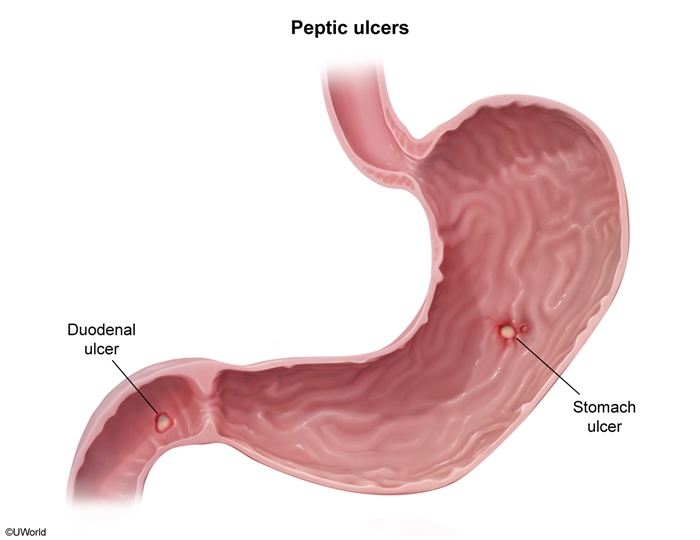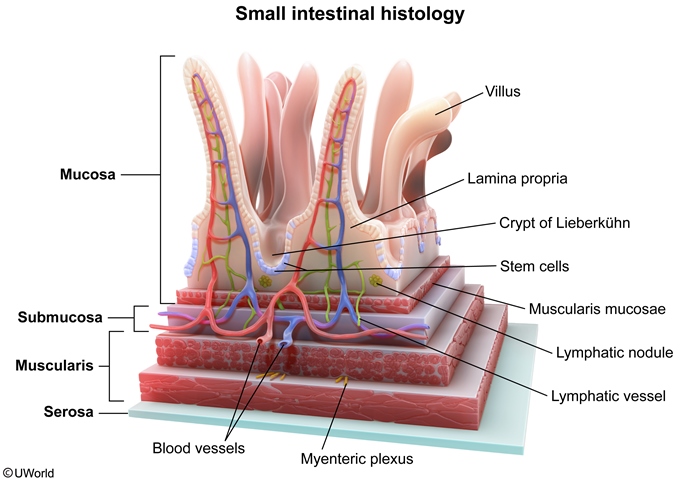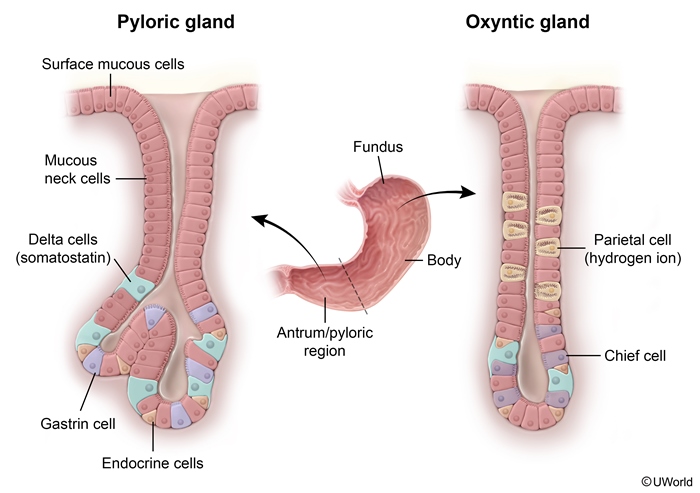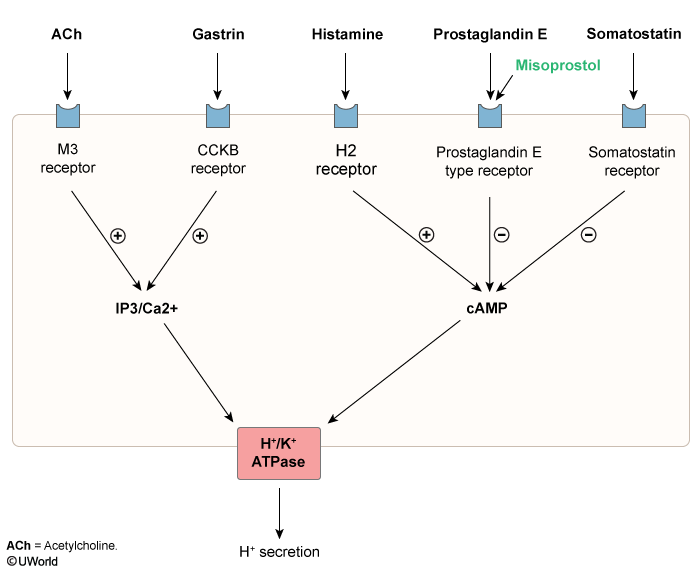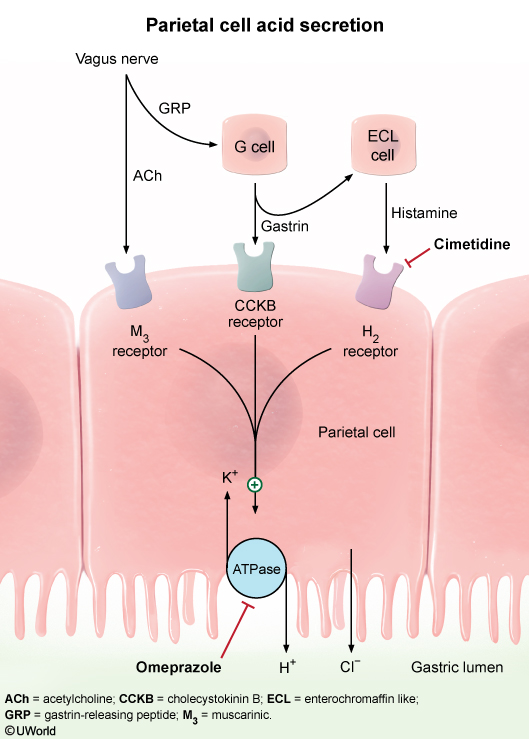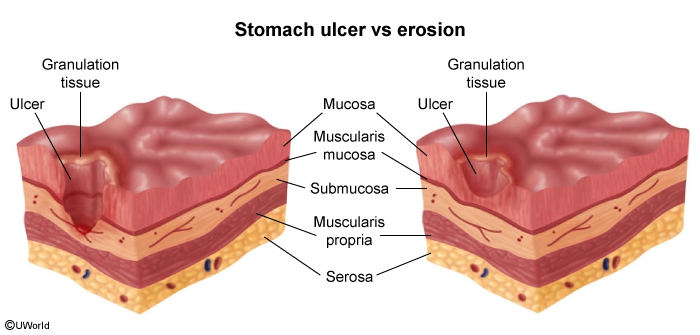Peptic Ulcer Disease
Article Sections
Introduction
Peptic ulcer disease (PUD) encompasses defects in the gastrointestinal (GI) mucosa, including the stomach and/or proximal duodenum (Figure 1), that extend through the muscularis mucosae (Figure 2). These ulcers are caused by an imbalance between mucosal defense mechanisms and aggressive luminal factors, such as gastric acid and pepsin. The 2 most common etiologies are Helicobacter pylori infection and the use of nonsteroidal anti-inflammatory drugs (NSAIDs). PUD is one of the most common causes of upper GI bleeding.
Pathophysiology
Normally, the gastric mucosa is protected from highly acidic gastric contents by a thick layer of mucus and bicarbonate (assisted by vasodilatory effects of prostaglandin secretion) and tight junctions between epithelial cells. Different types of cells and glands are present in the stomach (Figure 3
Continue Learning with UWorld
Get the full Peptic Ulcer Disease article plus rich visuals, real-world cases, and in-depth insights from medical experts, all available through the UWorld Medical Library.
Figures
